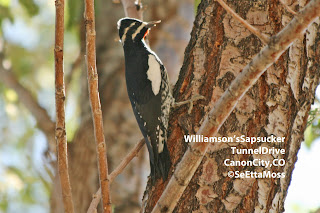Possible Northern Parula in Canon City, CO

These are not the type of photos I would usually post but I am hoping to get some assistance in either confirming or disconfirming what I think is this bird's species. I found it on the Canon City Riverwalk earlier this week but didn't have time to upload my photos. Since this is a very rare species for this location, and I didn't get great looks at it, I had convinced myself that it was probably a common warbler that I just saw at funny angle and misidentified. With these pics I do think this is a Northern Parula, likely a female. I would appreciate feedback from those more familiar with this eastern warbler than I. SeEtta


